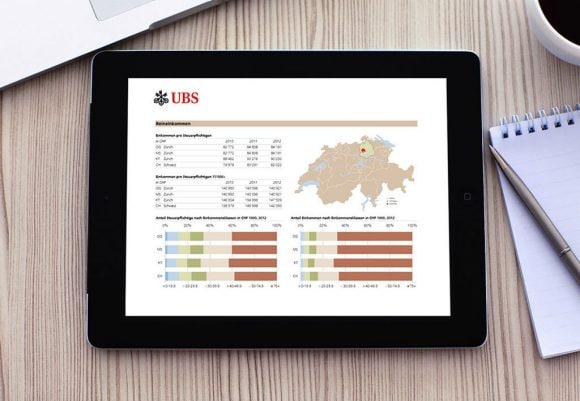We’re here for you
Arrange an appointment for a non-binding consultation or if you have any questions, just give us a call.

UBS Real Estate Market Study
Development of real estate prices in Switzerland: What are the forecasts for the real estate market? Which factors are decisive?
Content:

Home prices rose by 0.6% in 4Q24. Compared to the previous year, they were up 2.4%, and after adjusting for inflation, the gain was 1.8%— slightly above the long-term average.
By the end of 2024, existing rents and offered rents were 3.3% and 2.3% higher, respectively, than a year earlier. Momentum in rental prices, however, has slowed considerably. Offered rents dipped slightly quarter over quarter, and the quarterly increase in existing rents was roughly half of what it was in summer 2024.
UBS Swiss Real Estate Bubble Index in the 4th quarter of 2024: moderate
The UBS Swiss Real Estate Bubble Index continued to decline in 4Q24, reaching 0.29 index points. According to the index, the risk of a real estate bubble remains moderate.
Low ownership costs relative to renting, subdued mortgage demand, and a further slowdown in construction activity make a pronounced price correction increasingly unlikely.
What is the UBS Real Estate Bubble Index and how is it calculated?
The UBS Swiss Real Estate Bubble Index shows the risk of a real estate bubble – a significant overvaluation of real estate and the likelihood of an imminent price drop – on the Swiss real estate market. UBS economists use a model with different subindices to calculate the bubble index:
Depending on the current index value, the real estate bubble risk is divided into the following four categories:

What is the forecast for the development of the real estate market in Switzerland?
Because of significantly improved financing conditions, the pace of home price increases is expected to accelerate in the coming quarters. The demand index—the number of active property searches for owner-occupied homes—was more than 20% above its prior-year level in December 2024. Home prices are projected to rise by about 3-4% this year.
The map shows price developments over the last five years for all 106 Swiss economic regions, as well as an indication of regional risk based on the development of the price-to-income and price-to-rent ratios.


The facts about your preferred municipality
Do you want to understand how property prices or population levels have changed in a municipality? Or how the location is perceived in general? How high are taxes? The UBS municipality guide is free of charge and answers all your questions.
Arrange an appointment for a non-binding consultation or if you have any questions, just give us a call.
Disclaimer